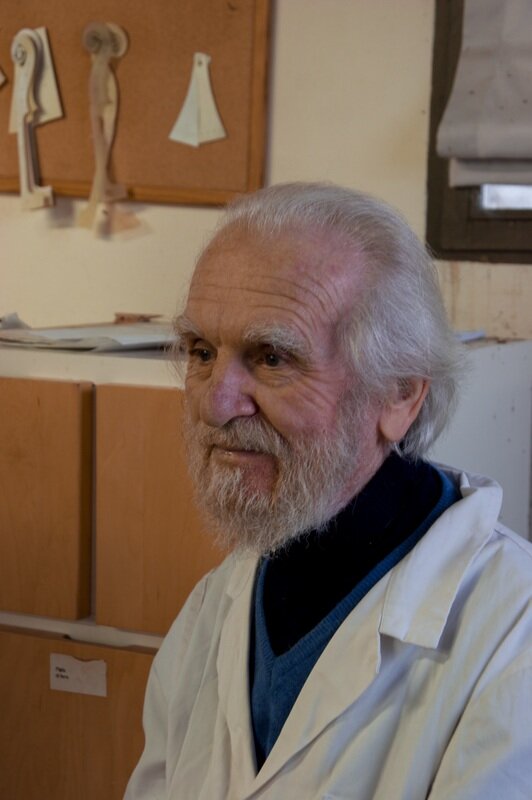
Over Fifty Years of History



History and Experience
In 1976, Guido Bizzi and his music ensemble “Studio di Musica Antica”, the first Italian group specialized in Medieval and Renaissance music, decided after several performances at the Teatro VERDI, to establish their headquarter near the theater,in the district called ”Isola”, the island, in the center of Milan.
Guido proposed an agreement to “ Leonardo”, the carpenter of the Isola, and after a while his workshop was full of musical instruments of all kinds.
Its name was “Il Laboratorio di Guido Bizzi” which was recognized by many as one of the most active cultural spots of the town.
This was the beginning of an extraordinary adventure that would transform the carpenter workshop into a Violin Making School which, five years later, the Administration of Milano decided to name officially as the “Violin Making School” of the City Milano.

Luca Sbernini

Pino Cazzaniga e Bellini

Lorenzo Lippi

The "Bottega di Liuteria" is now ready

Gabriele Negri
When Guido Bizzi met the head of the educational department of Milano, Maria Luisa Sangiorgio, they immediately agreed upon Guido’s idea of creating a violin making school. In just few weeks we designed the new initiative and we wrote the final project together with Virginia Villa, who was at the beginning of her prestigious career and with the musicians of the “Studio di Musica Antica” who became later on professors at the School with some of them still working there after more than 40 years. Marco Tiella became the technical director, Lorenzo Girodo e Claudio Canevari professors, and we decided to call to renowned makers to become the teachers of the art of violin making: Renato Scrollavezza and Luca Primon.
Also the carpenter of the “Isola”, Leonardo Monti, was very proud to become professor, teaching the students the basic principles of wood working.

Renato Scrollavezza

Luca Primon

Leonardo Monti, the carpenter of "ISOLA"

La workshop of Leonardo becomes a "Bottega di Liuteria" (1976)
In 1978, the School was working at full capacity and in the autumn of 1979 the “Scuola di Liuteria di via Pastrengo” was invited by the authorities of the city of Tokyo to organize an exhibition of the School, together with four concerts in Tokyo and Kyoto. This initiative was presented as an example of innovative cultural operation realized by the city of Milan. The ensemble of Guido Bizzi, “Studio di Musica Antica” performed the four concerts with the use of many Medieval and Renaissance musical instruments that were reviewed as the first cases in Japan of concerts with the use of historical replicas.
Two years later the city of Milan proposed to transform the “Scuola di Liuteria di via Pastrengo” into a Civic School of the town. Virginia Villa became Director of the School for the following years before continuing her professional path in Cremona where she became Director of the “Museo del Violino”.

1979 - Tokyo students visiting the exhibition

1979 - Authorities of the City of Tokyo

1979 - One of the concerts in Kyoto. From the left: Guido Bizzi, Claudio Canevari, Lorenzo Girodo, Giorgio Ferraris, Marco Tiella